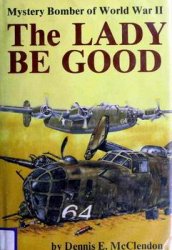First identified by George Reisner (see 1.4), the A-Group culture in Lower Nubia was contemporaneous with the Naqada culture of Upper Egypt. Like the Naqada culture, the A-Group is known mainly from its cemeteries, and Naqada culture craft goods,

Figure 5.4 Egypt: Predynastic (Naqada culture) burial from Naga el-Deir. Gifts of the Harvard University-Museum of Fine Arts Egyptian Expedition, 1921; the Egyptian Research Account, 1895; and the Egypt Exploration Fund and Chicago Woman’s Club, 1899 OIM 11488 (body). The Oriental Institute of The University of Chicago
Obtained through trade, were found in a number of A-Group burials. But A-Group burials also have distinctly different pottery from that of the Naqada culture, including painted “egg-shell” beakers that must have been a type of luxury ware. Together with other archaeological evidence, especially the distribution of sites, the pottery demonstrates the existence of a different culture group. Unlike Naqada burials, A-Group people were sometimes buried with fringed leather garments, bags, and caps, and some A-Group cemeteries also contained a large number of animal burials (goats, dogs). Such distinctly different burials, with grave goods which symbolized important beliefs concerning death, also represent a different culture.
In Dynastic times Nubia was the major route through which exotic raw materials from Punt were obtained (see 3.9) and this trade probably developed in Predynastic times, especially as the Naqada culture became more socially and economically complex. Naqada culture burials contain very few Nubian craft goods, which suggests that while Egyptian goods were exported to Nubia and were buried in A-Group graves, A-Group goods were of little interest further north. Only the raw materials that were

Map 5.2 A-Group sites in Nubia
Transformed into craft goods, such as elephant ivory ornaments, were desired A-Group imports in Egypt.
Mainly excavated in the 1960s Nubian archaeological campaign (see 1.4), A-Group habitations consisted of reed huts and rock shelters; only a few sites had houses with stone foundation slabs. Evidence of agriculture is not found until the Terminal A-Group (contemporaneous with Naqada IIIb/Dynasty 0 and 1st Dynasty), when there are grinding stones and chert blades with sickle sheen. Lower Nubia has a narrow floodplain and, unlike Upper Egypt, was not a good environment for extensive cereal agriculture (see 3.2). But trade with Egypt is definitely attested there by the mid-4*h millennium bc, at the site of Khor Daud. No house structures were found at this site, which consisted of almost 600 storage pits with much pottery, two-thirds of which was Egyptian (Naqada II). It is likely that much of the Naqada pottery in Nubia was used as containers for agricultural products imported from Egypt, such as beer, wine, and oil.
A-Group sites extend from the area of the First Cataract at Aswan to the Second Cataract. A few A-Group sites of the later 4th millennium bc are located to the south of the Second Cataract, in the Batn el-Hagar region. Three large Terminal A-Group centers are known, mainly from their burial evidence, at Sayala, Dakka, and Qustul. At
Box 5-C Predynastic chronology (taken from The Oxford History of Ancient Egypt, edited by Ian Shaw)
A-Group chronology Lower Egypt
Buto-Ma’adi culture, ca. 4000-3200 bc Upper Egypt
Naqada I (Amratian), ca. 4000-3500 bc Naqada II (Gerzean), ca. 3500-3200 bc Naqada III (Semainean)/Dynasty 0, ca. 3200-3000 bc
Lower Nubia
Early A-Group contemporary with Naqada I and early Naqada II
Classic A-Group contemporary with Naqada Ild-IHa Terminal A-Group contemporary with Naqada IIIb/Dynasty 0, 1st Dynasty
This time Egyptian copper tools and carved stone vessels are found in elite A-Group burials, and in Sayala Cemetery 137 one burial contained two maces with gold handles. It has been suggested that such wealthy burials were those of A-Group chieftains, who would have benefited economically from the trade with Egypt.
Bruce Williams (University of Chicago) has proposed that a fragmented stone incense burner from Qustul Cemetery L has iconographic evidence of the earliest king, who was Nubian. Part of the scene carved on the incense burner is of a seated ruler in a boat holding a flail and wearing the White Crown (two symbols of Egyptian kingship). The more recently excavated evidence by German archaeologists, at Cemeteries U and B at Abydos, however, suggests that the earliest royal burials were there - in Egypt. The Qustul incense burner was probably imported into Nubia, where it was buried in a tomb that belonged to a very high status Nubian.




 World History
World History









